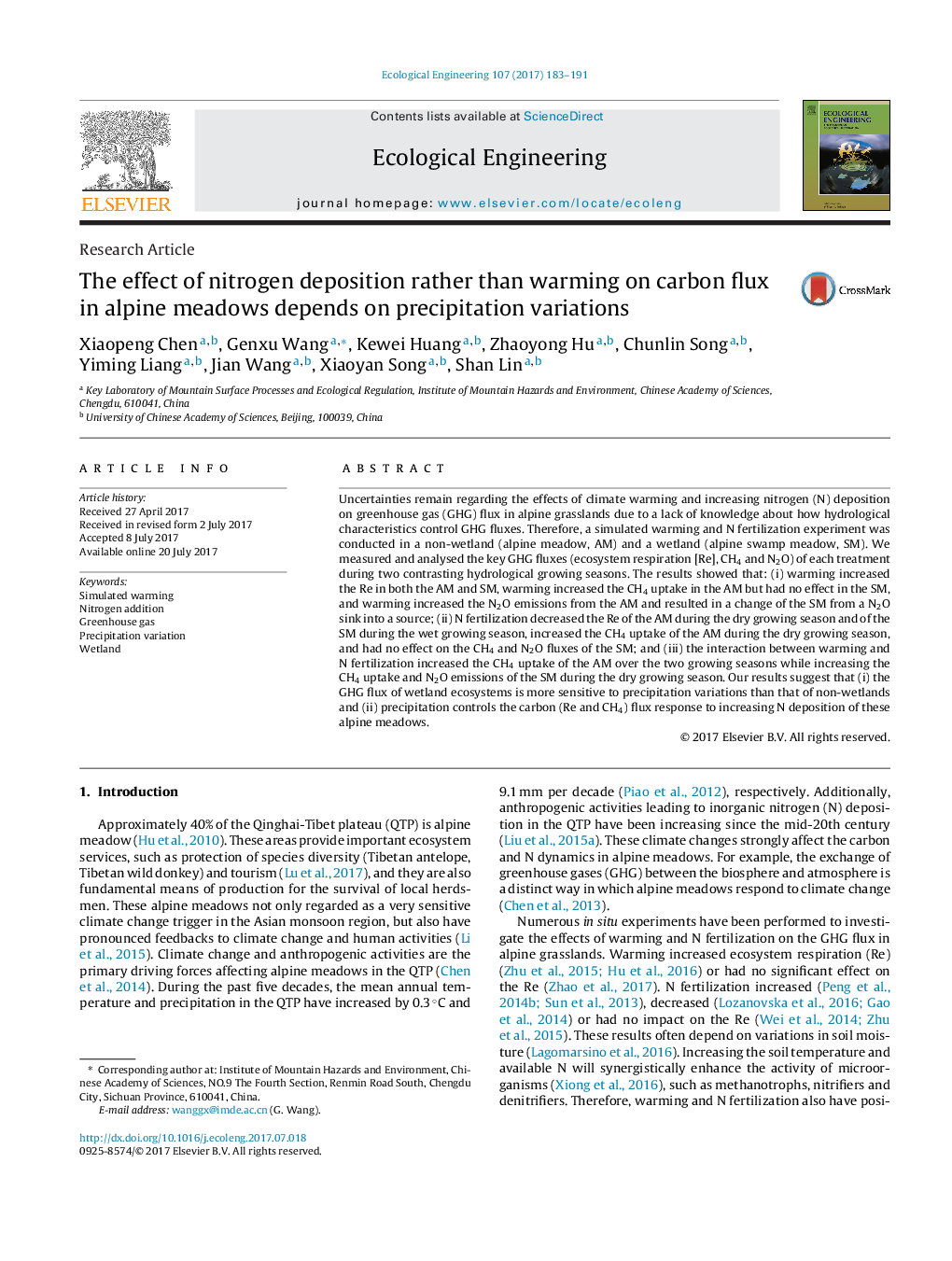| Article ID | Journal | Published Year | Pages | File Type |
|---|---|---|---|---|
| 5743673 | Ecological Engineering | 2017 | 9 Pages |
â¢GHG flux were measured during two contrasting hydrological growing seasons.â¢GHG flux of wetlands is more sensitive to rainfall variations than non-wetlands.â¢Precipitation controls the carbon flux response to increasing N deposition.
Uncertainties remain regarding the effects of climate warming and increasing nitrogen (N) deposition on greenhouse gas (GHG) flux in alpine grasslands due to a lack of knowledge about how hydrological characteristics control GHG fluxes. Therefore, a simulated warming and N fertilization experiment was conducted in a non-wetland (alpine meadow, AM) and a wetland (alpine swamp meadow, SM). We measured and analysed the key GHG fluxes (ecosystem respiration [Re], CH4 and N2O) of each treatment during two contrasting hydrological growing seasons. The results showed that: (i) warming increased the Re in both the AM and SM, warming increased the CH4 uptake in the AM but had no effect in the SM, and warming increased the N2O emissions from the AM and resulted in a change of the SM from a N2O sink into a source; (ii) N fertilization decreased the Re of the AM during the dry growing season and of the SM during the wet growing season, increased the CH4 uptake of the AM during the dry growing season, and had no effect on the CH4 and N2O fluxes of the SM; and (iii) the interaction between warming and N fertilization increased the CH4 uptake of the AM over the two growing seasons while increasing the CH4 uptake and N2O emissions of the SM during the dry growing season. Our results suggest that (i) the GHG flux of wetland ecosystems is more sensitive to precipitation variations than that of non-wetlands and (ii) precipitation controls the carbon (Re and CH4) flux response to increasing N deposition of these alpine meadows.
